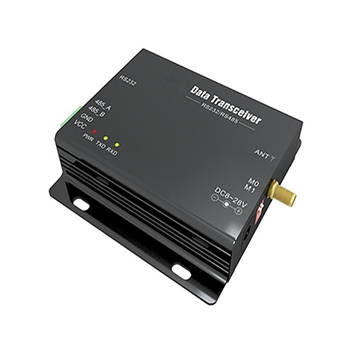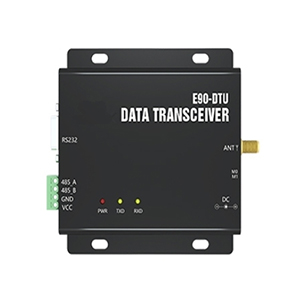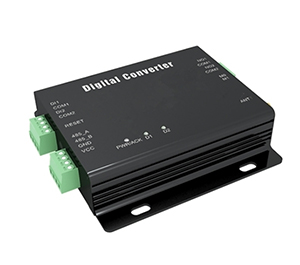Data Transfer Unit Stability Testing
Since GPRS DTU is mostly used in remote monitoring sites, the stability of GPRS DTU becomes very important. Many users choose GPRS DTU, and it is not enough to finish the selection work only by doing some simple tests in the early stage. If you choose an unstable GPRS DTU and apply it in large quantities, it is tantamount to planting a time bomb for your own monitoring system. So how can you test the stability of GPRS DTU comprehensively and quickly at the beginning? This has become an important topic. Here is the verified GPRS DTU stability test process, hoping to help users master a comprehensive and operable GPRS DTU identification method.
Online Idle Test
Test the ability of the DTU to maintain the established link. When there is no data, the DTU maintains its own connection. The DTU should be able to maintain an average link duration of at least 1 hour without disconnection and reconnection. Let the DTU not send any data after connecting to the data center, and observe how long it can maintain the link, the longer the better. At the end of this test, several data packets should be sent to the data center and DTU respectively to verify that the idle link maintained by the DTU is real and usable. If either the DTU or the data center cannot receive the data packet from the other party, it is unqualified.
Resume testing after data center shutdown
In the future operation and maintenance process of the data center, there will definitely be a temporary suspension of services, so it is necessary to test the rapid recovery ability of DTU after the data center is restored. Let the data center be shut down for a short time, such as 1 minute or 60 minutes, and see if the DTU can quickly connect to the recovery data center. The recovery time is within 5 minutes, the sooner the better. Repeat this test many times, the DTU must be able to restore the connection 100%, as long as the DTU cannot restore the connection once, it is unqualified.
Frequent two-way data volume test
Test the ability of GPRS DTU to send and receive small data packets frequently, because in daily operation, it is mainly the frequent two-way sending and receiving of small data packets.
At the data center and DTU side, send a data packet of about 100 bytes to each other every 10 seconds, and make statistics at the same time for 10 minutes or 30 minutes to see if there is a network disconnection and whether there is data packet loss on both sides condition. The best result is: there is no disconnection and reconnection, and no data packets are lost. If the DTU is disconnected and then cannot go online, or cannot continue to send and receive data in both directions after going online, it is unqualified.
Tip: You can short-circuit the serial ports 2 and 3 of the DTU to form a loop test so that you can perform a bidirectional test only by sending it to the data center.
Two-way big data stress test
Some applications need to temporarily transfer large amounts of data, so this test is also very necessary. At the data center and the DTU side, a data packet of about 1000 bytes is sent to the other party every 2 seconds for 30 minutes, and statistics are made to see if there is a network disconnection and whether there is a data packet loss on both sides. Generally speaking, the GPRS DTU under the stress test may be disconnected and reconnected, and data packets may also be lost, but the number of disconnected and reconnected should not exceed 10 times, and the smaller the number, the better. If the DTU LoRa is disconnected and no longer goes online, or cannot continue to send and receive data in both directions after going online, it is unqualified.
Removing Antenna Test
In some sites, the GPRS/GSM signal may be temporarily interrupted or weakened due to some reasons on site. After the signal returns to normal, the GPRS DTU should be able to automatically restore the connection and continue to transmit data to the data center.
Remove the antenna for a short time: When the GPRS DTU is online, remove the antenna of the GPRS DTU for 1 minute, then reinstall the antenna, and submit three data packets of about 100 bytes to the GPRS DTU in turn when the GPRS DTU antenna is removed. When the antenna is plugged in, the GPRS DTU must be able to automatically and quickly restore the connection, the faster the better, and the data during the connection period can be sent to the data center. If all 3 data packets are lost, it is unqualified, and if all the data is uploaded, it is the best.
Remove the antenna for a long time: When the GPRS DTU is online, remove the antenna of the GPRS DTU for 30 minutes, and then reinstall the antenna. When the antenna is plugged in, the GPRS DTU must be able to automatically restore the connection, and the recovery time should be less than 10 minutes. If the connection is not restored for 30 minutes or more, it is unqualified.
Repeat power-on test
Sometimes, there will be a temporary power failure and then recovery on-site, and GPRS DTU should be able to ensure reliable login to the data center. Power on the GPRS DTU, and then wait for the GPRS DTU to connect to the data center, each time the DTU can log in to the data center within 2 minutes. Repeat the test 20 times. Once it is found that a DTU cannot connect to the data center, it is unqualified. If conditions permit, the number of tests can be increased.
Dialing and SMS interference test
During DTU login or online operation, some unknown text messages or phone calls may be received. GPRS DTU should be able to ensure that these situations will not affect its normal work. Power on the DTU, wait for about 10 seconds, and start sending 2 text messages and 2 calls to the DTU, and the DTU should be able to connect to the data center correctly. After successfully connecting to the data center, send 2 text messages and 2 calls to the DTU, observe for 5 minutes to see if the DTU can maintain the link, and then send 10 data packets in both directions to see if it can be sent and received normally.
Watchdog test (optional)
For a GPRS DTU, even if the previous test items have passed, if its internal watchdog is not set properly, there are hidden dangers. If it runs continuously for a long time on site, problems may still occur. There are many ways to test the watchdog. Generally, on the internal CPU data bus or address bus, a few pins are short-circuited instantly to make the program run away, or the RAM data is disordered, or an external strong interference source can be used to interfere. In this case, for a product with a good watchdog setting, its CPU can be reset within 20 seconds. If it cannot be reset, it is unqualified. Repeat this test many times, and the DTU must be 100% reset.
This function requires testers to be familiar with the DTU motherboard, and it may not be easy to operate, so it is selected as an item for testing. However, if there is a test operating condition, it is recommended to carry out this test.
Card removal test (optional)
If the GPRS DTU is applied in a bad site, such as vibration or corrosive gas, it may cause short-term poor contact of the SIM card, and the GPRS DTU needs to be able to recover automatically. We use the temporary SIM card to simulate this situation. When the GPRS DTU is connected to the data center, remove the SIM card for about 3 seconds and then plug it in again to see if the GPRS DTU will drop the line and send and receive data normally. Remove the card for about 60 seconds and then plug it in again to see if the GPRS DTU will be disconnected. If the DTU can no longer automatically connect to the center after temporarily taking out the SIM card and reinstalling it, it is recommended not to use this kind of DTU in an environment with vibration or corrosive gas on site.
Power fluctuation test (optional test)
If the GPRS DTU is powered by batteries or solar energy at the application site, there may be large-scale power fluctuations, and the GPRS DTU should be able to adapt to such power fluctuations. Taking a 12V battery as an example, the voltage fluctuation range may fluctuate between 5 volts and 14 volts, so when the GPRS DTU is connected to the data center, the external power supply is slowly raised and lowered from 3 volts to 16 volts to simulate the charging and discharging of the battery. It is normal for the DTU to reset in this test. We mainly check whether the GPRS DTU will no longer be able to connect to the data center. If the DTU can no longer automatically connect to the center after the power supply fluctuates, it is recommended not to apply this type of DTU to the battery-powered environment on site.
Arrears test (optional test)
During the perennial operation of GPRS DTU, it is very likely that the GPRS service cannot be used due to SIM card arrears resulting in communication connection interruption. After recharging, GPRS DTU should automatically restore the connection with the center.
Find an arrears SIM card and insert it into the GPRS DTU, and wait for 10 minutes. Due to arrears, DTU cannot log in to the data center. At this time, when dialing the number with a mobile phone, it will prompt that the number has been shut down or the incoming call has been restricted. At this time, recharge the SIM card, and then dial the number with the mobile phone. If the prompt rings for the other party or color ringtone, it means that the card has been recharged successfully and the GSM service has been resumed. If the DTU is still unable to connect to the data center by itself and must be manually reset once to restore the connection to the data center, it is considered unqualified.
One more thing to add, if the DTU supports phone calls or text messages to reset, and the test method is effective, it should be considered qualified.
Domain name resolution test (optional test)
Some application systems use domain names instead of fixed IP addresses, which will add a link to domain name resolution. Due to the temporary failure of the domain name resolution service, an additional test item is required when using domain name resolution.
Test Methods:
- Simulation of domain name failure. If the dynamic domain name is invalid, the static domain name is set to point to an invalid address, and the DTU is set to find the data center through the domain name, the DTU will not be able to connect to the data center after power-on. At this time, restore the pointing of the domain name, and then observe whether the DTU can automatically connect to the data center. The shorter the recovery time, the better. If the DTU still cannot automatically connect to the data center, it is unqualified.
- After successfully connecting to the data center, conduct an antenna test on the GPRS DTU with the domain name set to see if it passes the test. If the test fails, the item is unqualified
- After the GPRS DTU with the domain name is set, after successfully connecting to the data center, perform a recovery test after the data center is closed to see if it passes the test. If it fails the test, it is unqualified. If the domain name resolution test fails, it is recommended not to apply this type of DTU to the system that uses the IP address of the domain name resolution data center.

